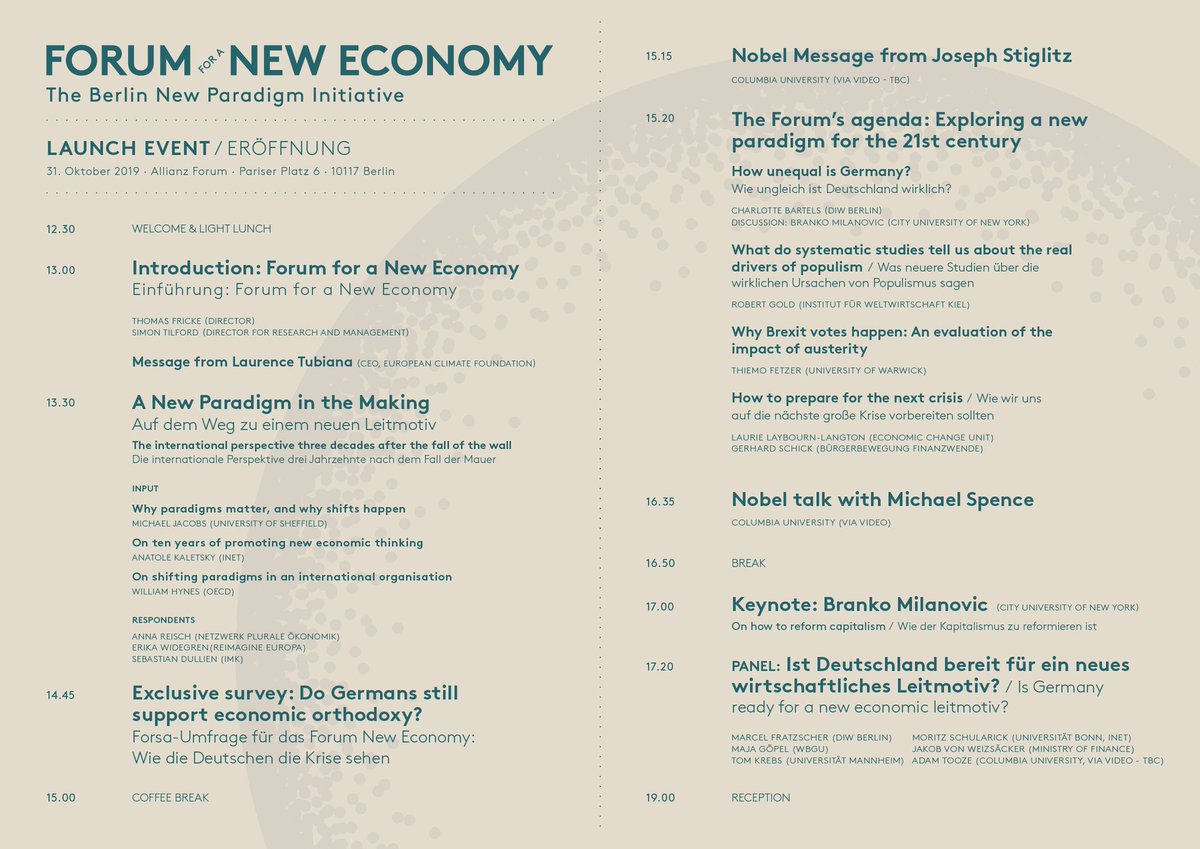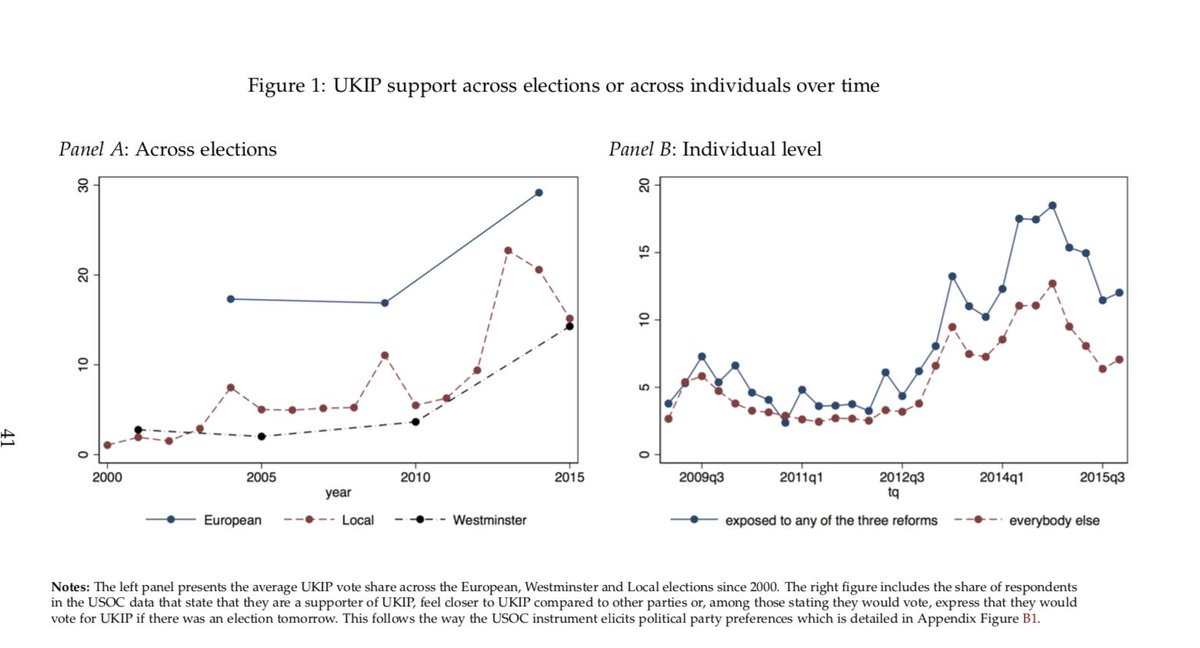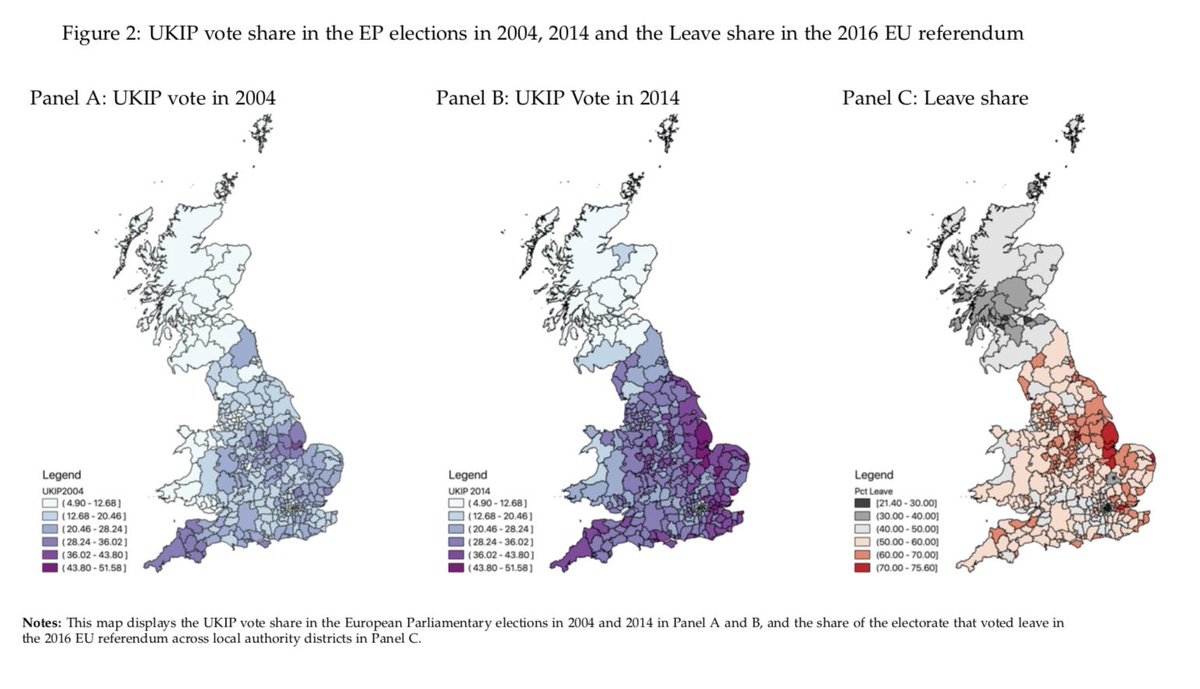
Timely #ContactTracing does matter fighting #COVID19. In a new paper (➡️ bit.ly/394Ebuo) we study a bizarre #Excel error in England that caused 16k cases to NOT be contact traced. We econometrically can link this blunder to ~ 120k new cases & 1.5k deaths...🧵⬇️1/N 



Studying non-pharmaceutical interventions to fight #COVID19 is HARD because we hardly ever isolate specific individual policies as often many measures are taken together (lockdowns, school closures, masks,...). For #ContractTracing we also have mostly correlational evidence...2/N
Enter the English Test&Trace system hastily built on, what appears to be a set of XLS spreadsheets giving us a consequential natural experiment. On Oct 4, PHE announced that ~ 16k #COVID19 cases were not correctly reported resulting in a large jump in reported cases.. 3/N 



The reason was an XLS file reaching its max # of rows resulting in case-information to be truncated. This affected individuals taking tests from as early as Sept 20 who were themselves informed of their test result, but whose case was not contact traced until earliest Oct 3. 4/N 


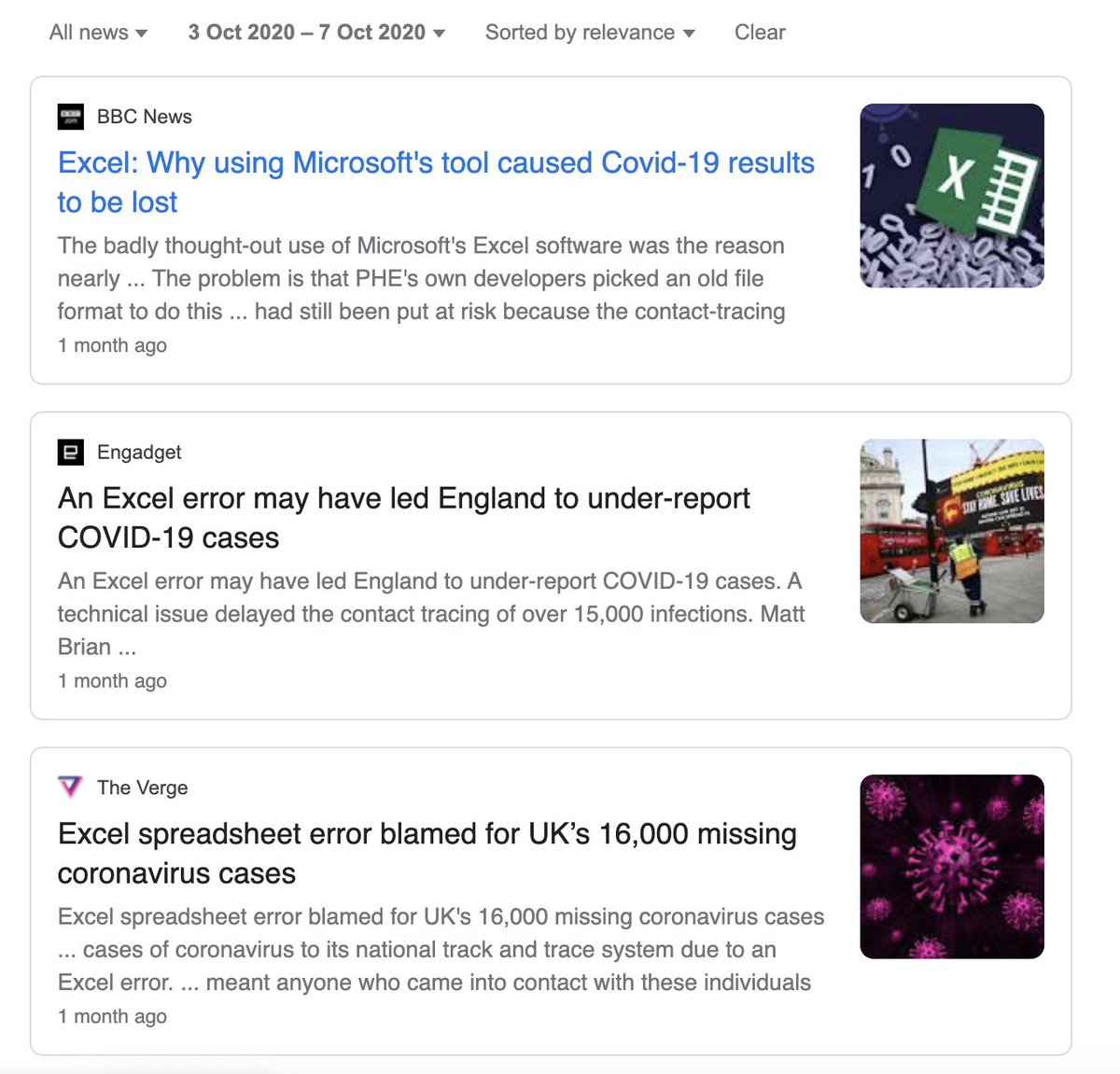


The #PHE statement is obfuscating things a bit but we we can quite well identify where those missing cases are geographically from public data. How do we do that? Usually we expect at least 95% of tests to report back within 5 days of the test date. 5/N 

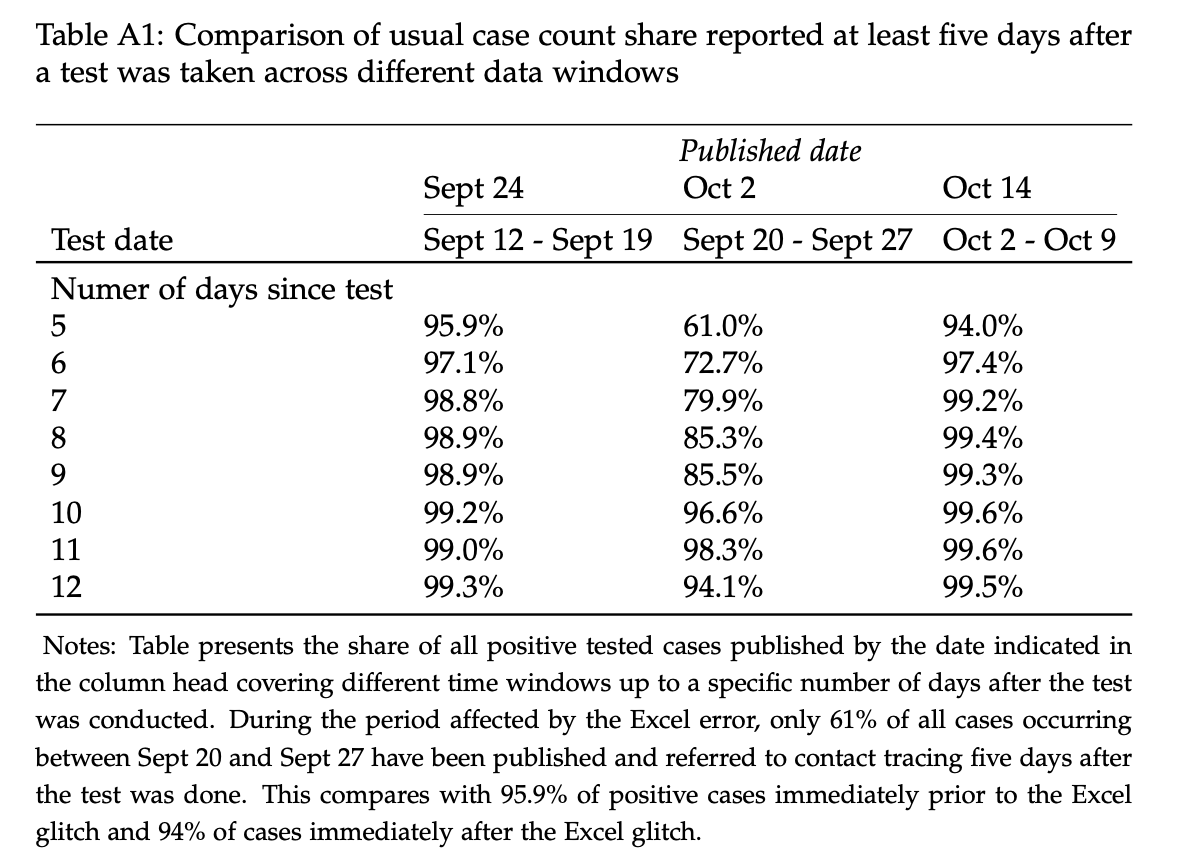

Below, we look at jumps in #COVID19 cases reporting for tests taken on on Sep 24. We observe the case count "converges" as labs take some time but there is a notable jump on Oct 3 of almost 1k new cases 9 days after. Such jumps are visible for most days btw Sep 20 to Oct 2. 6/N 


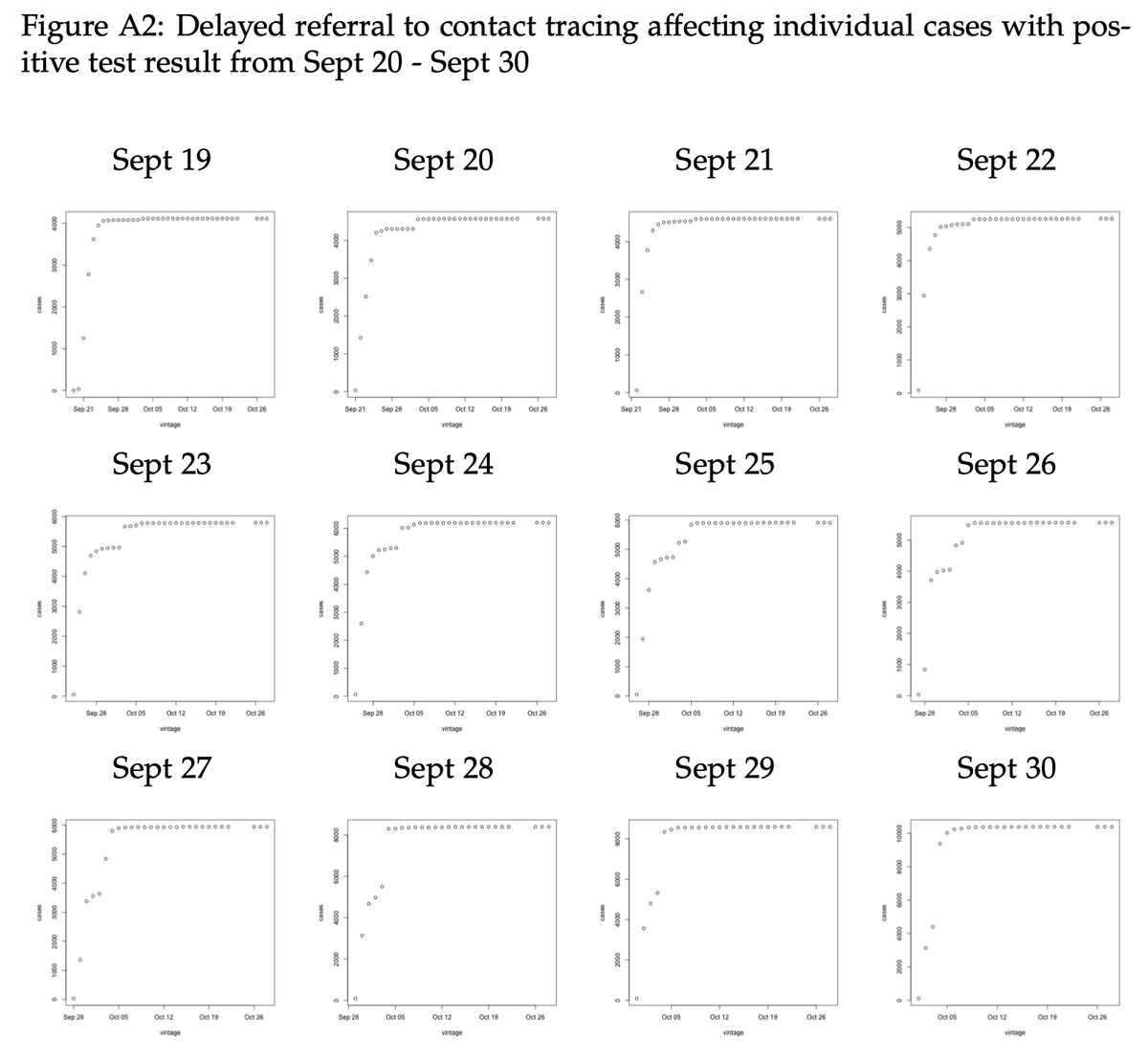
Focusing on specimen dates (i.e. people who tested) between Sept 20 to Sept 27 we can be certain to not confound lab delays. This measure gives us ~7250 #COVID19 cases not contact traced until 7-14 days after the test was taken. They are not evenly spread across England. 7/N 

In the DID exercise we compare areas that had more or less exposure to the Excel error, taking into account a host of factors. The estimates imply that for every non-contact traced case, on avg, there are 0.4-0.6 new daily infections between calendar weeks 39 to 44. 8/N 



Taking together we find 120k #COVID19 cases & 1500 deaths linked to those cases that were not referred to #ContactTracing in time. This represents ~ 20% of all new COVID19 cases during weeks 39-44. 9/N 

We also find some evidence that suggests that the deluge of cases to be traced from Oct 3 may have resulted in a worsening of contact tracing performance. We also find that the test positivity rate and testing appears to increase -- which is not surprising. 10/N 



These results are v robust to: a matching refinement zooming in on districts that have very similar pandemic situation (positive test rate, number of tests, number of infections) prior to glitch; its not sensitive to any one region; measurement; functional form, placebos.... 11/N
Have a look at the paper ➡️ bit.ly/394Ebuo -- I must admit I never thought I am able to study a public intervention through the window of such a bizarre Excel spreadsheet error -- but there is always a first 12/N
I do hope the govt releases more useful data on #TestandTrace in a timely fashion (plus there is a FOIA to back that up). Public spending on the scheme is huge, & I personally think the govt should leverage the many world leading academics in UK when it comes to evaluating . 13/N
Also as @ben_moll @toxvaerd1 et al can confirm, EPI/Econ academics actually can & do work well together. We just have to overcome challenges with different language and toolboxes - but we share the common goal to figure out what works to suppress #COVID19 & aid the economy. ENDS
I will make sure to have a Github repo up in the coming weeks with the data & code used. Btw. I should also add @EdConwaySky did a nice explainer video on the data sources, terms, projections & who publishes what data & why some data is not public
• • •
Missing some Tweet in this thread? You can try to
force a refresh










